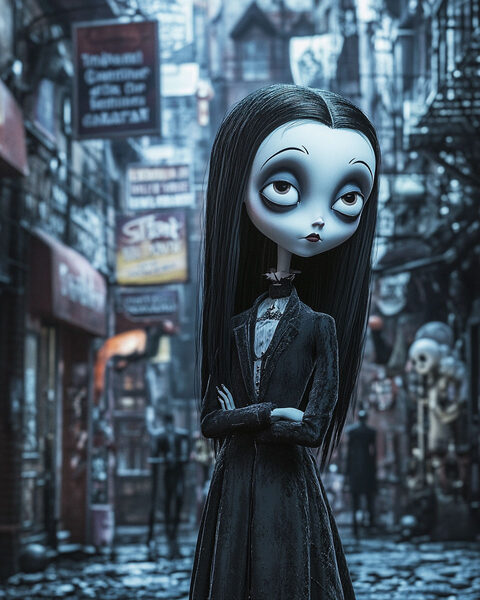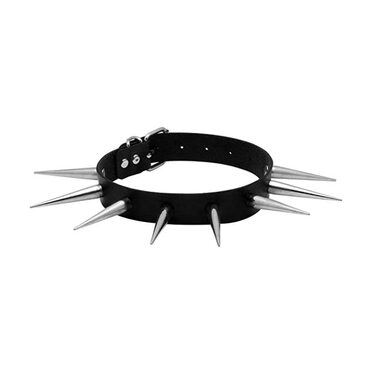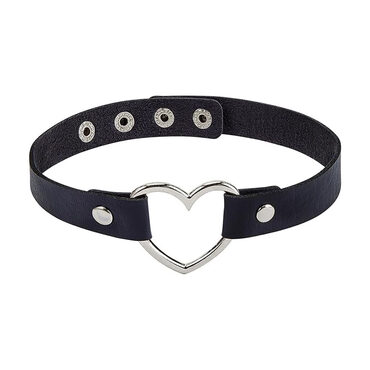Where Goth and Pop Culture Meet

Explore how goth culture, once a fringe subculture, has seamlessly woven its dark, mysterious aesthetic into mainstream pop culture. From fashion and music to film and art, gothic elements have left a lasting impact, creating a unique fusion that continues to captivate audiences worldwide.
Goth culture, with its dark, mysterious, and often misunderstood aesthetic, has long been a subculture on the fringes of mainstream society. However, over the years, it has found its way into the heart of pop culture, leaving an indelible mark on everything from fashion and music to film and art. In this post, we explore how gothic elements have been seamlessly woven into the fabric of mainstream pop culture, creating a unique fusion that continues to captivate audiences around the world.
The Evolution of Goth Culture
Before diving into its influence on pop culture, it’s essential to understand the roots of goth culture. Emerging from the post-punk movement of the late 1970s and early 1980s, goth culture drew inspiration from gothic literature, horror films, and dark romanticism. Bands like Bauhaus, Siouxsie and the Banshees, and The Cure laid the musical foundation, while the fashion was characterized by dark clothing, Victorian-inspired attire, and an affinity for the macabre.

Gothic Fashion on the Runway
One of the most visible intersections of goth and pop culture is in the world of fashion. High fashion designers have long been inspired by gothic aesthetics, with elements like black lace, corsets, leather, and dramatic makeup making frequent appearances on the runway. Designers such as Alexander McQueen, Vivienne Westwood, and Rick Owens have all incorporated gothic motifs into their collections, bringing the dark elegance of goth into the mainstream spotlight.
The rise of alternative fashion brands has also played a significant role in popularizing goth-inspired looks. From Hot Topic’s mass-market appeal to more niche brands like Killstar and Demonia, goth fashion has become accessible to a broader audience, blending the boundaries between subculture and mainstream fashion.

Gothic Music’s Influence on Pop
The influence of gothic music extends far beyond the confines of its original scene. Artists from various genres have drawn inspiration from the brooding tones and dark themes of goth music, infusing them into their own work. For instance, the melancholic and ethereal sounds of artists like Lana Del Rey and Billie Eilish echo the influence of goth pioneers, while pop icons like Madonna and Lady Gaga have also dabbled in goth-inspired visuals and themes.
Moreover, the resurgence of goth music in the 21st century, through genres like darkwave and synthwave, has seen a revival of interest in the aesthetic. Modern bands like She Past Away and Drab Majesty continue to keep the spirit of goth alive while attracting new fans from across the pop culture spectrum.

Gothic Themes in Film and Television
Film and television have perhaps been the most significant mediums through which gothic elements have permeated pop culture. From the moody atmospheres of Tim Burton’s films, such as Edward Scissorhands and Beetlejuice, to the dark fantasy worlds of The Addams Family and Buffy the Vampire Slayer, gothic aesthetics have become a staple in visual storytelling.
More recently, the rise of shows like American Horror Story, Stranger Things, and Wednesday has further cemented gothic elements in mainstream media. These productions embrace the eerie, the supernatural, and the macabre, blending them with pop culture sensibilities to create compelling narratives that resonate with a wide audience.

Gothic Art and Pop Culture
Gothic art has also found its way into mainstream pop culture, often through digital platforms like Instagram and Pinterest. Dark, surreal, and often hauntingly beautiful, gothic art appeals to those who appreciate the aesthetic of the macabre. Artists like Luis Royo, H.R. Giger, and Gerald Brom have become icons in the gothic art scene, with their works influencing everything from album covers to video game designs.
The crossover between gothic art and pop culture is evident in the popularity of tattoos, graphic novels, and even video games that embrace dark, gothic themes. Titles like Bloodborne, Dark Souls, and The Elder Scrolls series are prime examples of how gothic aesthetics have been integrated into mainstream entertainment, drawing players into immersive worlds that celebrate the beauty of darkness.

The Future of Goth in Pop Culture
As we move further into the 21st century, the fusion of goth and pop culture shows no signs of slowing down. With the rise of social media, platforms like Instagram, TikTok, and YouTube have given goth culture a new lease on life, allowing it to reach a global audience and inspiring a new generation of creators and influencers.
Gothic elements will likely continue to influence mainstream fashion, music, art, and entertainment, as the allure of the dark, the mysterious, and the macabre remains as strong as ever. As these two worlds continue to intersect, we can look forward to even more creative and unexpected collaborations that celebrate the beauty of goth in all its forms.

The intersection of goth and pop culture is a testament to the enduring appeal of gothic aesthetics. What began as a subculture on the fringes has evolved into a powerful force within mainstream culture, influencing everything from fashion and music to film and art. As goth continues to inspire and captivate, its presence in pop culture will only grow, ensuring that the beauty of darkness remains a vital and influential part of our cultural landscape.
RELATED:
Why do people like dark art? - Why do some of us crave darkness in art? This piece from Turtlebite explores how dark art offers catharsis, beauty in the grotesque, and a sense of belonging for those drawn to the shadow side.
See also:











